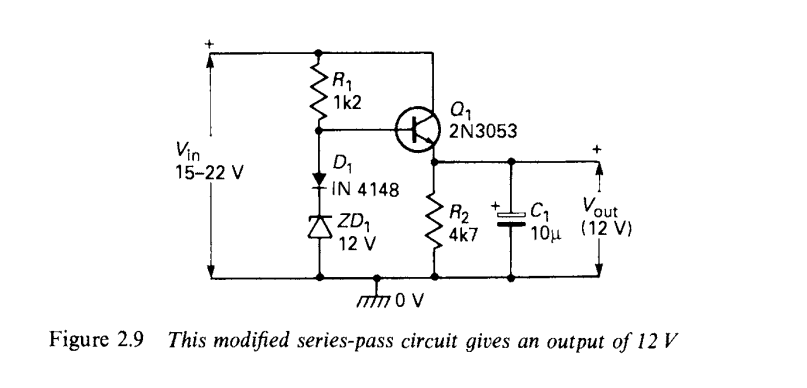I took this circuit from the book Diode,Transistor & FET Circuits Manual by R.M. MARSTON. It is for wide range voltage regulation.
I tested this circuit and it works very well.
The main problem is that at first I used a C3150 NPN transistor and 100mA load. The transistor serves 100mA load but as soon as I attach a 300mA load the voltage drops and the transistor started to heat up.
Then I tried a TIP122 Darlington transistor, hoping it would help to provide more current but the Darlington pair does the same as previous and wasn't able to provide the 300mA current.
On the other hand the 7812 voltage regulator ICs are able to provide sufficient current.
Will a transistor like the D1047 help to provide more current or is something wrong with the circuit itself which prevents it from providing more current?
Isn't the transistor supposed to serves the current here? Can I get more current with the same transistor with any other configuration?
There is one more property which I observed that if I place the load across R1, it was able to light up the bulb with 300mA current. Why is a normal Zener able to provide the current but not the C1350 transistor? What am I missing here?
Note: I am using a 5V Zener instead of the 12V and 12V input to this circuit. All other component values are the same.

